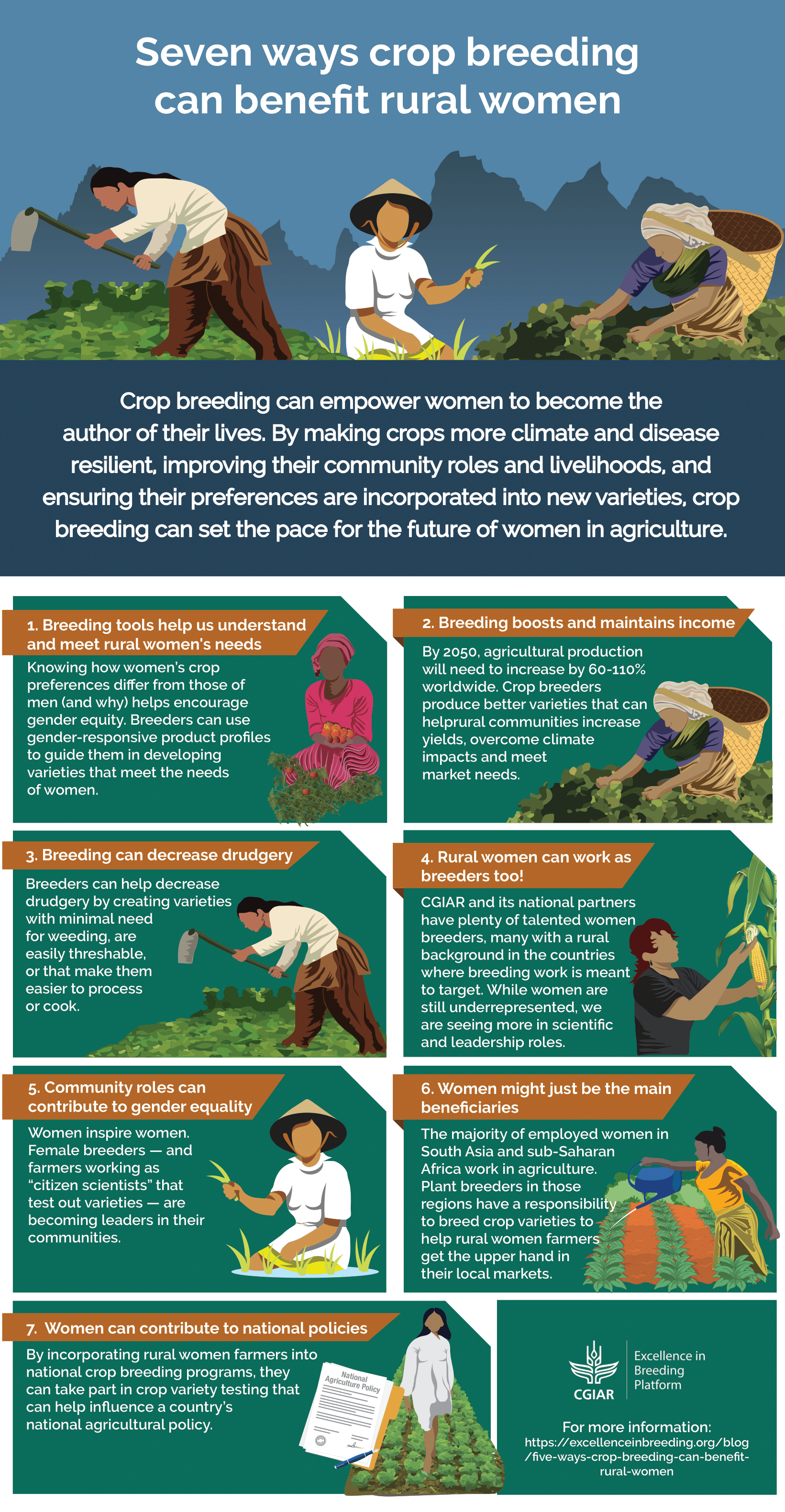
To many, crop breeding may sound very scientific and technical. But there are key social aspects to it, too. As we mark International Women’s Day, let’s examine the links between gender and the science of breeding.
Breeding has a tremendous opportunity to benefit women, or at least “do no harm.” This is especially true for rural women in developing countries. To do so, breeding programs must incorporate gender preferences into their product profiles to ensure new varieties are adopted. Women in developing countries, who are among the most vulnerable, will experience even greater gender inequality if we do not act on this. Otherwise, crop traits favored by men may further drive social, political, and economic inequality for rural women.
To change this, crop breeders can: develop crop varieties that carry desirable traits for women that reduce drudgery and raise their incomes, and include more rural women in breeding via citizen science and community engagement approaches.
Crop breeding can be a vital part of progress on gender equity. Check out the infographic and learn more about the ways breeding can benefit rural women.

*****
Contents reflect the information and views of the authors/quoted individuals only. EiB and partners are supported by CGIAR Trust Fund Contributors and the Crops to End Hunger initiative, via the Bill and Melinda Gates Foundation, GIZ, BMZ, USAID, UK Aid, ACIAR and other partners.
Comments
Also it is perfect for women